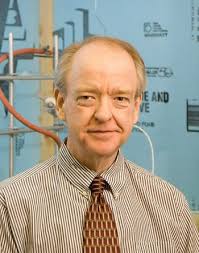Tony Rogers (1994, PhD ChE, Michigan Tech) has worked over 30 years on experimental thermodynamics, structure-property relationships, and mathematical techniques of searching molecular graphs for the presence of moieties, bonds, and other features. This experience was gained on faculty at Michigan Tech and earlier as a Senior Research Engineer at Research Triangle Institute (RTP, NC). Tony led an AIChE-DIPPR effort from 1991-2009 to compile and model chemical property information. He now teaches process simulation and process analysis and design to chemical engineering seniors. In the fall of 2000, Tony helped found the Enterprise Program through an NSF Action Agenda grant (EEC-9872533). Now in its 21st year, the Enterprise model gives teams of students from multiple disciplines an opportunity to work together in a business-like setting to solve real-world problems of importance to industry.
Over the years, what inspires you to continue as an Enterprise Advisor?
Enterprise lets me leave a lasting imprint on many of the CPM students. I don’t indulge modern students’ general overreliance on technology to communicate. Direct person-to-person interactions are encouraged to get things done. In my view, personal traits of honesty and reliability are much more important than the “gimmicky” concepts found in scholarly courses on teamwork. I can have a multi-year impact on a student and really give guidance and/or encouragement during a critical formative period.
As the recipient of the 2018 and 2020 Outstanding Enterprise Advisor Award, what is your approach to advising Consumer Product Manufacturing Enterprise?
My role is primarily to be a facilitator. Every year, I tell the newly-selected President and Executive Board that my role is to help them achieve their collective vision for the CPM Enterprise. I connect them with the resources, facilities, mentoring, and staff help they need. I stay in my lane and let the students show their creativity and initiative. New product and project ideas need to have student origination and/or buy-in; otherwise they are DOA.
What is your most memorable project CPM has worked on, and why?
In 2009, CPM partnered with the Blue Marble Security Enterprise to thermoform a 3M film into a cover for an LED taillight. The film’s optical properties spread the light uniformly across the cavity with relatively few light sources. Compared to an incandescent bulb, the LED taillight has a lower volume and weight, requires less energy, and is now standard equipment in the Buick Enclave.
This successful project proved that intradisciplinary pride can co-exist with respect for the diverse skillsets of the various Enterprise majors.
Describe an “aha!” moment you experienced while advising your team. How did this moment make it clear the benefit students gain from being a part of Enterprise?
Three years ago, the CPM President conducted himself so well at the Spring Design Expo that judges mistook him for an industry consultant. Running CPM let him stay calm, cool, and collected in front of any audience. The Enterprise model fosters more ownership in the organization than would be normal for a traditional class or club. Enterprise alumni stay connected after graduation to a surprising degree.
Periodically, I remind the students that overcoming bureaucracy and red tape is a valuable project management skill they are learning in CPM. They learn how to get things done and how to speak the corporate lingo.
Offering leadership opportunities has led CPM to have strong participation by its female members at all levels. No particular strategy to get there has been necessary; as a whole the class is welcoming and supportive.
What would be your advice to a student who wants to make the most of their Enterprise experience?
Be proactive and seek out leadership opportunities. Spot problems and fix them without being told. Practice being the kind of employee companies want to hire and relate these anecdotal details to prospective employers.
Also, step outside your comfort zone. An abundance of leadership positions exists in every Enterprise and within the Enterprise Program structure. In CPM, we created a new student leadership position, ‘Director of Professional Development’, to benefit all of the students who want to develop new marketable skills.
How do employers benefit when they hire students who have been on an Enterprise team?
The best hires, not surprisingly, have inherent personality traits like honesty, integrity, initiative, punctuality, and perseverance. Traditional classes, however, do not always require students to draw upon these traits to be successful. High-GPA students sometimes make bad employees simply because they lack good character. In the work environment we create, Enterprise students cannot lead and function well without being good people.
What is something you plan to do in the next year to enhance the student experience in CPM?
More accountability is needed for the larger project teams. My Executive Board plans to expand the peer evaluations and conduct them earlier to give more time for corrective feedback. Team Leaders will have a lot of authority and responsibility to manage.
What’s something fun, impressive or unique about yourself that might surprise people.
Sometimes you can connect with students about the strangest subjects. For instance, I grew up fascinated by the kayfabe surrounding the old territorial professional wrestling at its peak (c. 1965 – 1985). Unlike the cartoon-like product of today, the regional wrestling territories tried to make the in-ring product seem like real athletic contests. In boxing, the 1970s was a similar golden age for the heavyweight division with Ali, Foreman, Frazier, Norton, Lyle, Shavers, etc. Fortunately, through YouTube video clips I can share wrestling and boxing history with today’s students. Being a Clemson graduate, I can also brag a bit about college football championships and a 4-0 all-time record versus tOSU.
